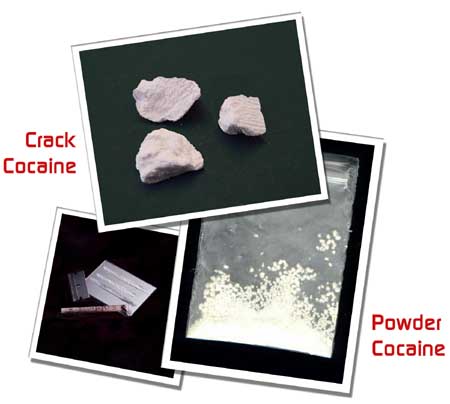Cocaine Information – Facts, Signs and Symptoms
Welcome!
Cocaine Information – Facts, Signs and Symptoms
Cocaine information: Drug addiction can transcend all social and economic divides. In fact, drug addiction does not differentiate between nationality, rich or poor, young or old, male or female, a celebrity or the ‘average Joe’ in the street – none more so than with the use of cocaine, the second most widely used illegal drug with over 12 million users in Europe and the Americas alone and a global annual potential production of 984 metric tons in the year 2006 (source: the World Drug Report 2007.)

As a potent and highly addictive drug, the physical and psychological symptoms of cocaine abuse will be the same whether the drug addict is a teen or a geriatric, a politician, a top model, a lawyer or a burger-flipper.
Cocaine and the Law
In the UK, cocaine is a Class A drug and dealing or supplying cocaine (even free of charge to a friend) can result in up to life in prison, an unlimited fine or both. Possession may incur a penalty of up to seven years in prison, an unlimited fine or both.
Cocaine and the Workplace
A recent survey by Narcotics Anonymous showed that out of 2000 callers, over 70% of cocaine users were in full time employment, and that alarmingly 44% had supplied cocaine to their colleagues within the workplace. Substance misusers are 3.6 times more likely to have an accident while at work so this is of great concern to any employers. For information on drug testing, visit our workplace drug testing page or our home drug test FAQ page.
Cocaine Information: Slang Names for Cocaine
The street names for cocaine constantly evolve and today’s name may be tomorrow’s old news, but slang names may include Charlie, Big C, White, White Horse or White Lady, Percy, Coke, Snow, Toot, Blow, Bernie, Nose Candy, Bump, Chalk, Cecil, Flake, Dust, Monster, Paradise, Boy, Girl and Witch.
How is Cocaine used?
Cocaine is derived from the coca plant (Erythroxylon coca) native to South America which can taken in a variety of ways – sniffed or snorted, inhaled, smoked, injected or even chewed in the form of coca leaves.
Types of Cocaine
The type of cocaine most commonly used in the UK is the white crystalline powder called cocaine hydrochloride which is often pure cocaine adulterated with fillers such as flour, baking soda, sugars such as glucose or creatine, talcum powder or other local anaesthetics such as lidocaine. It is usually sold in vials or in wraps or packets made from paper, plastic or aluminium foil.
This type of cocaine is most commonly ‘snorted’ or ‘sniffed’ in the Western world, a process properly known as insufflation, whereby cocaine is absorbed through the mucous membranes of the nasal passages. Any cocaine not directly absorbed is trapped in the mucous and swallowed easily because this form of cocaine is highly water-soluble.
The image of white ‘lines’ of this substance may well be familiar (also called ‘rails’ or ‘bumps’) that are chopped and sliced with a razor on a hard surface like a mirror or a toilet seat and then snorted through a tube or other devices commonly called ‘tooters’, often a rolled bank note, a drinking straw, the casing of a biro pen or long fingernails. At celebrity gatherings in London, it is reputed that sterling silver drinking straws were a fashionable party accessory for models which prevented their lipstick from coming off on drinking glasses and, when occasion invited, doubled as a ‘designer’ tooter. After snorting a line, the residue is sometimes tamped onto fingers and rubbed onto the gums which has a numbing effect due to the anaesthetic properties of cocaine.
Freebase is a base form of cocaine, having had the hydrochloride salt and most of the adulterants removed in a dangerous process involving the use of explosive chemicals such as ether. Freebase is insoluble in water and cannot be snorted, inhaled or injected and is therefore only smoked.
Crack cocaine is a form of ready-to-use freebase, so-called because of the ‘cracking’ noise it makes when heated. It is produced by heating a mixture of cocaine powder with baking powder (sodium bicarbonate) or ammonia and water. Upon cooling, this cocaine takes the form of hard pellets or small ‘rocks’ of a creamy white through to a beige colour according to purity and method of preparation. It is often sold in plastic bags or little vials, each one containing enough for two or three inhalations. Freebase and crack is usually smoked through a pipe made from a glass tube with a mesh or steel / copper wool at the bottom or even an empty soft drinks can with a perforated base. A flame held close to the rock produces a vapour which is then inhaled by the user. It can also be placed in silver foil.
Smoking freebase or crack cocaine enables a very rapid rush and subsequent high, as the cocaine enters the blood stream via the lungs, reaching the brain within a matter of seconds.
Cocaine taken by injection also reaches the brain within seconds. The powdered drug is usually mixed with water and administered by syringe directly into the bloodstream. It is also popular to inject cocaine along with another drug, such as heroin, to make what in this instance is known as a speedball. This combination is particularly dangerous and has been implicated in many deaths including famous individuals such as John Belushi and River Pheonix. Injecting cocaine is often more potent than smoking it because the entire amount directly enters the body as opposed to some escaping in vapours during the smoking process or not being released to its optimum during the heating of the crystal.
Cocaine can be taken orally, although in the developed world this is quite rare. As well as being rubbed onto the gum-line, more harmfully cocaine can be swallowed as powder wrapped in paper, colloquially called a ‘snow bomb’. Some indigenous peoples in the Andes still traditionally chew the leaves or make into coca tea to relieve hunger and combat altitude sickness. In the late nineteenth century the famous drink Coca-Cola was so-called because one of its key ingredients was a liquid extract of the coca leaf along with the Kola nut and did in fact contain cocaine. To this day Coca-Cola includes a non-narcotic extract of the coca leaf.
Cocaine and Addiction
So why is cocaine so addictive? In brief, the drug stimulates the central nervous system, interfering with the reward centres in the brain which are associated with the basic needs to eat, drink and have sexual intercourse. In tests on animals, the addictive nature of the drug is demonstrated by the animal seeking the drug in preference to food and water, even in times of extreme hunger and thirst.
This, in part, is due to the way cocaine diverts the normal path of dopamine, a chemical which affects brain processes which control, amongst other things, the ability to experience pleasure. Cocaine binds itself to the proteins which normally transport dopamine and facilitate its re-uptake, so the dopamine is forced instead to build up in the synapse, extending and hugely amplifying the natural sensations of pleasure to create a forced euphoria – an artificial ‘high’.
Cocaine Signs and Symptoms of Abuse
The intense high from a cocaine hit can be within seconds and the ‘crash’ or ‘comedown’ can be devastating, resulting in the immediate and overwhelming desire to take more. Furthermore, an addict can gain a tolerance to cocaine, requiring larger amounts more frequently to achieve the strength of their former cocaine induced euphoria.
Symptoms of cocaine use may include but are not limited to increased energy and mental alertness, hyperactivity and possibly tremors, euphoria, talkativeness, rapid pulse and raised breathing rate, raised body temperature and blood pressure, a runny or stuffy nose and occasionally a bleeding nose, a decrease in appetite, an inflated sense of power or strength, confusion, paranoia, panic and anxiety, hallucinations and dilated pupils. After-effects of cocaine use may be lethargy, intense sleepiness and often depression.
Cocaine Addiction, Withdrawal Symptoms and Overdose
Symptoms of cocaine addiction may include physical problems such as severe loss of appetite and weight loss, nausea, headaches, abdominal pain, neglect of other bodily needs and personal hygiene, mood swings and psychotic behaviours, cardiac problems, collapse of the nasal septum (in the case of repeated snorting of cocaine) and a constantly runny nose, and social problems including neglect of family or work responsibilities, change of friends and other normal social contacts, possibly stealing or selling personal possessions to fund a drug habit and keeping antisocial hours.
A cocaine overdose can cause heart attack or seizures, brain haemorrhage due to increased blood pressure, dangerous rise in body temperature, renal failure, delirium, convulsions and death. Many of these things can occur even after just one use of the drug – a cocaine-induced heart attack or full respiratory failure can occur in a first time user or an addict with an established tolerance.
Cocaine Drug Testing
Cocaine is detectable in the body in urine for typically 2 to 4 days and possibly up to five days after use using drug testing kits.









